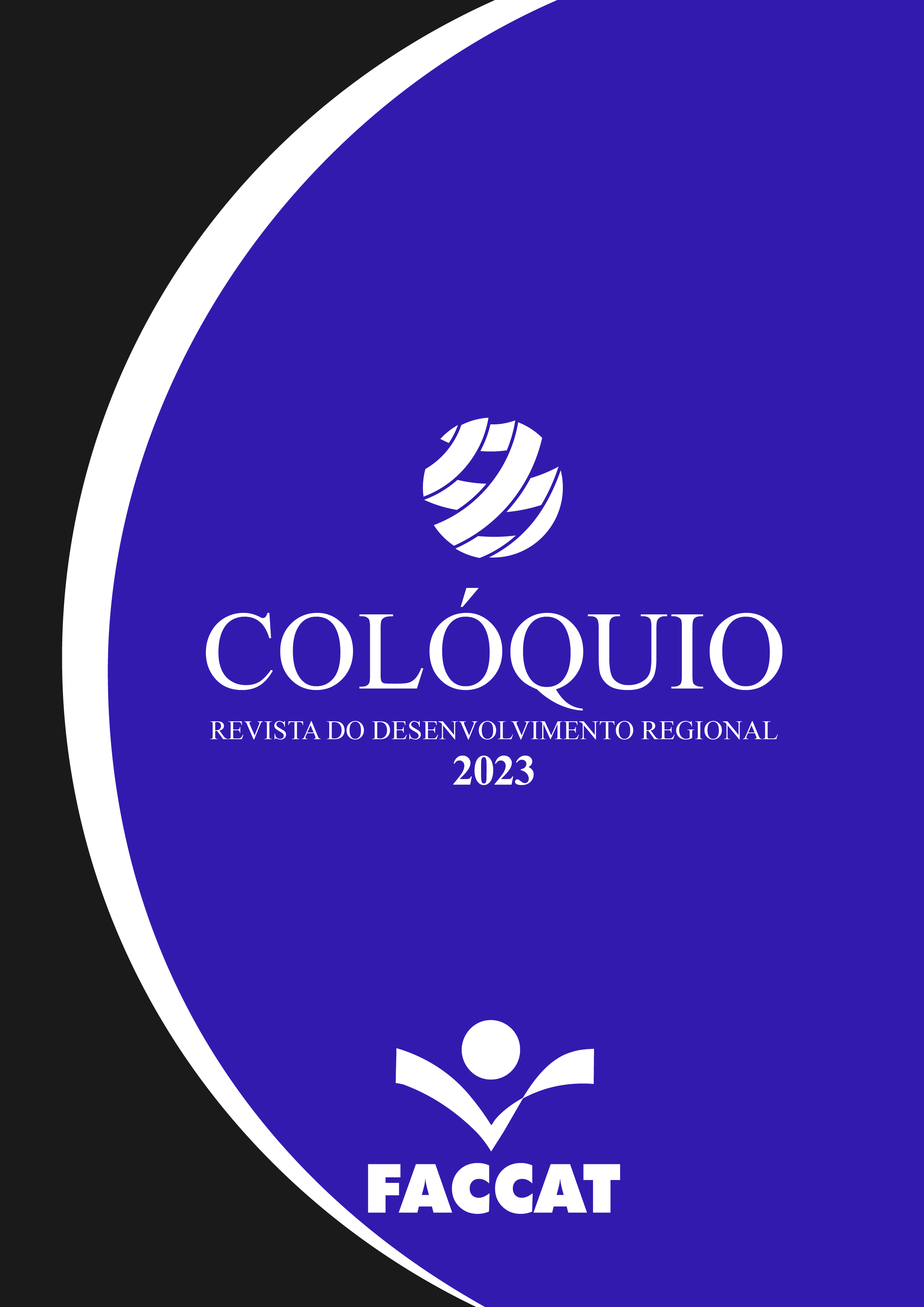What are the externalities of pig production? A study in Danish and Brazilian farms
DOI:
https://doi.org/10.26767/coloquio.v20i3,%20jul./set..2795Keywords:
Sustainability, Sustainable Agriculture, Agribusiness, SwineAbstract
The study aims to analyze sustainability practices of pig farming in Brazil and Denmark based on the evidence of the activity’s externalities. The Swine Sustainability Management and Assessment System (Sigeass) was used to analyze sustainability through 10 indicators and 60 assessment metrics. Data collection was carried out in four rural properties, two from each country, with full-cycle and independent production. The negative externalities refer mainly to the indicators of greenhouse gases emissions in the properties. The application of the system highlights the need for improvements concerning sustainability indicators to minimize the negative externalities of pig production. The application of swine sustainability management and assessment system highlights the need for improvements in relation to sustainability indicators, especially in the environmental dimension, according to the metrics evaluated, aiming to minimize the long-term impacts of pig production, as well as highlighting the relevance the insertion of continuous improvements in economic, social, and environmental aspects in favor of the sustainability.
References
ASSOCIAÇÃO BRASILEIRA DOS CRIADORES DE SUÍNOS. Mapeamento da suinocultura brasileira 2016. 2016. Disponível em: <http://www.abcs.org.br/attachments/-01_Mapeamento_COMPLETO_bloq.pdf>. Acesso em: 05 dez. 2022.
BAIARDI, D.; MENEGATTI, M., 2011. Pigouvian tax, abatement policies and uncertainty on the environment. Journal of Economics, v. 103, p. 221-251, 2011.
BARTHOLOMEU, D. B. et al. O mercado de carbono e a atividade suinícola. Agroanalysis, v. 27, n. 2, p. 46-47, 2007
BITHAS, K. Sustainability and externalities: Is the internalization of externalities a sufficient condition for sustainability? Ecological Economics, v. 70, p. 1703-1706, 2011.
Casagrande, L. F. Avaliação descritiva de desempenho e sustentabilidade entre uma granja suinícola convencional e outra dotada de biossistema integrado (BSI). Dissertação (Mestrado em Engenharia da Produção), Universidade Federa de Santa Catarina, Florianópolis, 2003.
CECHIN, A.; VEIGA, J. E. A economia ecológica e evolucionária de Georgescu-Roegen. Revista de Economia Política, v. 30, n. 3, p. 438-454, 2010.
ELKINGTON, J. Cannibals with forks: the triple bottom line of 21st century business. Capstone: Oxford, 2010.
GOMES, L. P. et al. Indicadores de sustentabilidade na avaliação de granjas suinícolas. Revista de Administração de Empresas, v. 50, n. 2, p. 146-154, 2014.
GUIMARÃES, D. D. et al. Suinocultura: estrutura da cadeia produtiva, panorama do setor no -Brasil e no mundo e o apoio do BNDES. BNDES Setorial, n. 45, p. 85-136, 2017.
HIRAKURI, M. H. et al. Indicadores de sustentabilidade da cadeia produtiva da soja no Brasil. Londrina: Embrapa Soja, 2014.
KARNIB, A. A methodological approach for sustainability assessment: application to the assessment of the sustainable water resources withdrawals. International Journal of Sustainable Development, v. 19, n. 4, p. 402-417, 2016.
KRUGER, S. D. Conjunto de indicadores para avaliação da sustentabilidade da produção suinícola. Tese (Doutorado em Contabilidade), Universidade Federa de Santa Catarina, Florianópolis, 2017.
KRUGER, S. D.; PETRI, S. M. Avaliação da sustentabilidade da produção suinícola sob o enfoque das externalidades. Revista Universo Contábil, v. 14, n. 2, p. 137-161, 2018.
LANDBRUG & FODEVAGER. Statistik gris og grisekød 2017. 2018. Disponível em: <https://lf.dk/tal-og-analyser/statistik/svin/statistik-svin/statistik-gris-2017>. Acesso em: 05 set. 2022.
MARQUES, J. C.; COMUNE, A. A teoria neoclássica e a valoração ambiental. In: ROMERO, A.; REYDAN, B.; LEONARDI, M. L. (Orgs.) Economia do meio ambiente. Campinas: IE/Unicamp, 1997, p. 21-42.
MINISTÉRIO DA AGRICULTURA, PECUÁRIA E ABASTECIMENTO. Suínos. 2022. Disponível em: <https://www.gov.br/agricultura/pt-br/assuntos/producao-animal/boas-praticas-de-producao-animal/suinos>. Acesso em: 08 ago. 2022.
PALHARES, J. C. P. Legislação ambiental e produção de suínos: as experiências internacionais. Fepam em Revista, v. 3, n. 1, p. 19-27, 2010.
SANTIAGO-BROWN, I. et al. Sustainability assessment in wine-grape growing in the new world: Economic, environmental, and social indicators for agricultural businesses. Sustainability, v. 7, n. 7, p. 8178-8204, 2015.
TAVARES, J. M. R. et al. Redução do consumo de água e da produção de dejetos na suinocultura: um caminho para a sustentabilidade. Brasília: Embrapa Suínos e Aves, 2013.
TAVARES, J. M. R. et al. Sustentabilidade da suinocultura: reduções de consumo de água e de dejetos na produção animal. Brasília: Embrapa Suínos e Aves, 2012.
UNITED STATES DEPARTMENT OF AGRICULTURE. Production, supply and distribution. 2022. Disponível em: <https://apps.fas.usda.gov/>. Acesso em: 10 nov. 2022.
WEYDMANN, C. L. , 2005. Externalidades e mudanças da regulamentação ambiental para a suinocultura norte-americana: é possível no caso brasileiro?. Revista de Economia e Sociologia Rural, v. 43, p. 287-305, 2005.
WINTER, R. et al. Notas sobre o impacto da produção de suínos na bacia do Rio Toledo-Paraná. Informe GEPEC, v. 9, n. 2, p. 1-23, 2005.







